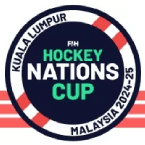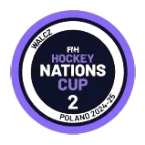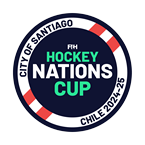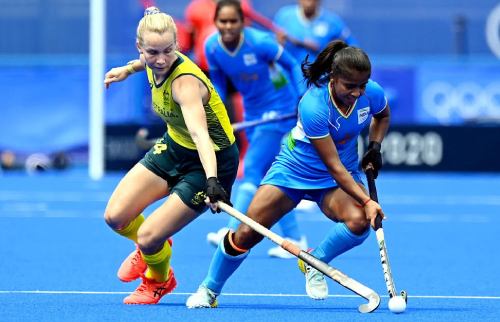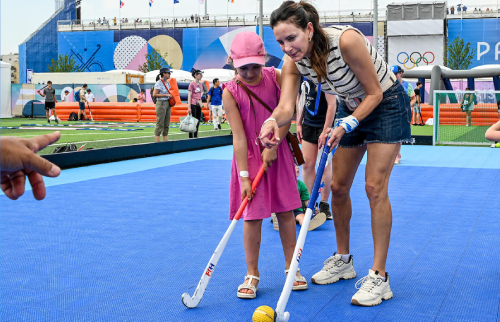
The FIH Rules of Hockey are updated in the January following the Olympic Games or FIH Hockey World Cups. FIH Sport Director and double-Olympian Jon Wyatt introduces the main Rules changes, which have just come into force.
Jon, what is the process for changing the Rules and how was it applied this time?
The Rules are issued by the FIH Rules Committee (made up of Rules experts from the 5 Continental Federations) under the authority of the International Hockey Federation (FIH). They are updated normally every 2 years in the January following the Olympic Games or FIH Hockey World Cups. This allows an 18-month run in to the next global tournament for all players, coaches, fans and officials to become familiar with any changes and adapt accordingly. Due to the postponement of the Tokyo Olympic Games, the update scheduled for January 2021 was also postponed by a year, hence publishing the new Rules now. The FIH Rules Committee undergoes an extensive consultation and discussion process with athletes, coaches, National Associations, officials and spectators together with match and competition reports, video analysis, Rules trials and Tournament Regulations which vary the Rules, as part of the Rules review, that ultimately leads to any Rules changes. Due to the short turnaround in this cycle to the 2022 FIH Hockey Women’s World Cup in July this year, the amendments to the Rules in this version are relatively minor so as to minimise the adaptations required by players, coaches and officials.
What are the changes in the new Rules and why have they been made?
Removal of Penalty Corner protective equipment - Rule 4.2 has been changed to allow for defending players using Penalty Corner protective equipment to continue to play the ball outside the circle after an interception during the taking of a penalty corner. Players can now continue to run with the ball while keeping their protective equipment on but they must remove that same equipment immediately after, at the first opportunity to do so and always inside the 23 m area. No player using PC protective equipment can play the ball outside the 23 m area at any time. This has been introduced to protect athlete safety so that the focus can be on the ball and the play, and not on removing protective equipment during a pressurised defensive situation. It was trialled in the FIH Odisha Hockey Men’s Junior World Cup in Bhubaneswar in December 2021, and received unanimous support from coaches, athletes and officials.
Aerial balls - Rule 9.10 was changed to allow for the playing of what is commonly referred to as Aerial Balls. The previous text did not cover for the possibility for players to safely intercept a falling ball, which is now seen as both legitimate and positive to the development of the game. This followed extensive discussions before, during and after the Tokyo Olympic Games, during which a more consistent interpretation and understanding of this element of our game was agreed. Aerial Balls will continue to be closely monitored by all stakeholders so that player safety can be maintained.
The other Rules changes are essentially cosmetic and clarifications of existing Rules.
When do these Rules come into effect?
The Rules of Hockey apply to all levels of the game and are effective from 1 January 2022 at International level. National Associations have discretion to decide the date of their implementation at National level, based on their domestic seasons. Typically, rule changes are not introduced into domestic leagues mid-season, although we hope that with the simplification of the removal of protective penalty corner equipment rule, this may be adopted immediately in many domestic leagues even if they are currently half way through as it makes this aspect of the game safer, easier to understand for players and easier to officiate for umpires.
What areas are being considered for future potential Rule changes?
We continue to seek ways of making our sport even more enjoyable for all of our participants whilst retaining hockey’s unique and attractive characteristics and keeping the game as safe as possible, as athletes and equipment continue to push the boundaries of what is possible. Of particular interest are penalty corners and how this set play that is unique to hockey and provides so many highlights and so much excitement, can be maintained in as safe a way as possible. Over recent years changes in stick technology and the changing body shape and strength of athletes has led to faster shots at goal and therefore a corresponding increase in the equipment being worn by defenders to protect against the possibility of injury. This has led to new challenges for coaches (offensive and defensive penalty corner tactics), athletes (wearing and discarding protective equipment including face masks, gloves, knee, thigh and foot guards) and officials (balancing player safety with the spectacle of the drag flick). Over the next 2-3 years, we will carry out an extensive research, consultation and ideas process to find the best solutions to this evolving balance of the spectacular with athlete safety, and look forward to new and innovative ideas that can be trialled and tested at all levels of hockey.

